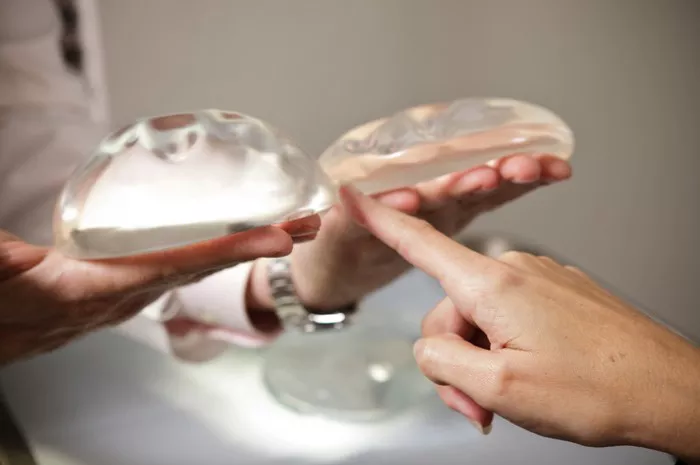Breast augmentation is a popular cosmetic procedure that can enhance the size and shape of the breasts. One of the key decisions to make when considering breast augmentation is choosing between silicone and saline breast implants. Both options have their advantages and considerations, including safety factors. In this article, we will explore the differences between silicone and saline breast implants and delve into the safety considerations associated with each to help you make an informed decision.
Understanding Silicone Breast Implants
Silicone breast implants are made of a silicone outer shell filled with a cohesive silicone gel. The gel used in silicone implants is designed to mimic the natural feel and movement of breast tissue. Silicone implants have been extensively studied and improved over the years, and they are now considered a safe and widely used option for breast augmentation.
Understanding Saline Breast Implants
Saline breast implants consist of a silicone outer shell filled with sterile saline solution (saltwater). Unlike silicone implants, saline implants are filled after they are inserted into the breast, allowing for adjustments in volume during the surgery. Saline implants have been used for many years and are considered safe for breast augmentation.
Safety Considerations
Both silicone and saline breast implants have a long history of safe use. However, there are certain safety considerations associated with each type:
Silicone Breast Implants
-
Rupture Detection
One concern often raised with silicone implants is the detection of implant ruptures. While rare, when a silicone implant ruptures, the cohesive gel may stay within the implant pocket or migrate to other areas. Regular monitoring through clinical examinations and imaging techniques, such as MRI, is recommended to detect potential ruptures.
-
Silent Ruptures
Silicone implant ruptures can sometimes be “silent,” meaning there may be no noticeable symptoms or changes in breast appearance. This makes regular monitoring and imaging crucial for detecting any potential ruptures.
-
Capsular Contracture
Capsular contracture is a potential complication that can occur with both silicone and saline implants. It involves the formation of scar tissue around the implant, which can cause the breasts to feel firm or appear distorted. The risk of capsular contracture can be influenced by various factors, including implant placement, surgical technique, and individual healing response.
-
FDA Approval and Monitoring
Silicone implants are approved by the U.S. Food and Drug Administration (FDA) and have undergone rigorous testing to ensure their safety and efficacy. The FDA recommends regular monitoring with MRI or ultrasound three years after the initial implant surgery and then every two years thereafter.
Saline Breast Implants
-
Rupture Detection
One advantage of saline implants is that ruptures are typically easier to detect. If a saline implant ruptures, the saline solution is harmlessly absorbed by the body, resulting in a noticeable decrease in breast size. This allows for prompt detection and necessary follow-up actions.
-
Implant Feel and Natural Appearance
Some individuals may find that saline implants do not provide the same natural feel and appearance as silicone implants. The saline solution is less cohesive and may not mimic the texture and movement of natural breast tissue as effectively.
-
Rippling
Saline implants have a higher likelihood of visible rippling or wrinkling, especially in individuals with thin breast tissue. This can affect the overall aesthetic appearance of the breasts.
-
FDA Approval and Monitoring
Saline implants are also approved by the FDA and have a long history of safe use. Regular monitoring is recommended, although the need for routine imaging may be less frequent compared to silicone implants.
Choosing the Right Implant
The decision between silicone and saline breast implants should be based on individual preferences, body characteristics, and discussions with a qualified plastic surgeon. Factors to consider include:
- Natural Look and Feel: If achieving a natural look and feel is a top priority, silicone implants may be a preferred choice. The cohesive silicone gel closely mimics the texture and movement of natural breast tissue.
- Rupture Detection: If ease of rupture detection is a significant concern, saline implants may be preferred. The noticeable decrease in breast size after a rupture allows for prompt detection and necessary action.
- Risk Tolerance and Monitoring: Consider your comfort level with ongoing monitoring requirements. Silicone implants typically require regular monitoring with imaging techniques such as MRI, while saline implants may have less frequent imaging needs.
- Body Characteristics: Your existing breast tissue, chest wall anatomy, and personal body characteristics may influence the choice of implant. Your surgeon will assess these factors and recommend the most suitable option for your unique situation.
Conclusion
Both silicone and saline breast implants have a proven track record of safety and can provide satisfying results for breast augmentation. The choice between silicone and saline implants should be based on individual preferences, aesthetic goals, and discussions with a qualified plastic surgeon. Considerations such as natural look and feel, rupture detection, risk tolerance, ongoing monitoring, and body characteristics should guide your decision-making process. By thoroughly understanding the differences and safety considerations associated with silicone and saline implants, you can make an informed choice that aligns with your desired outcome and prioritizes your overall well-being. Consult with a board-certified plastic surgeon to discuss your options and determine the best approach for your breast augmentation journey.


